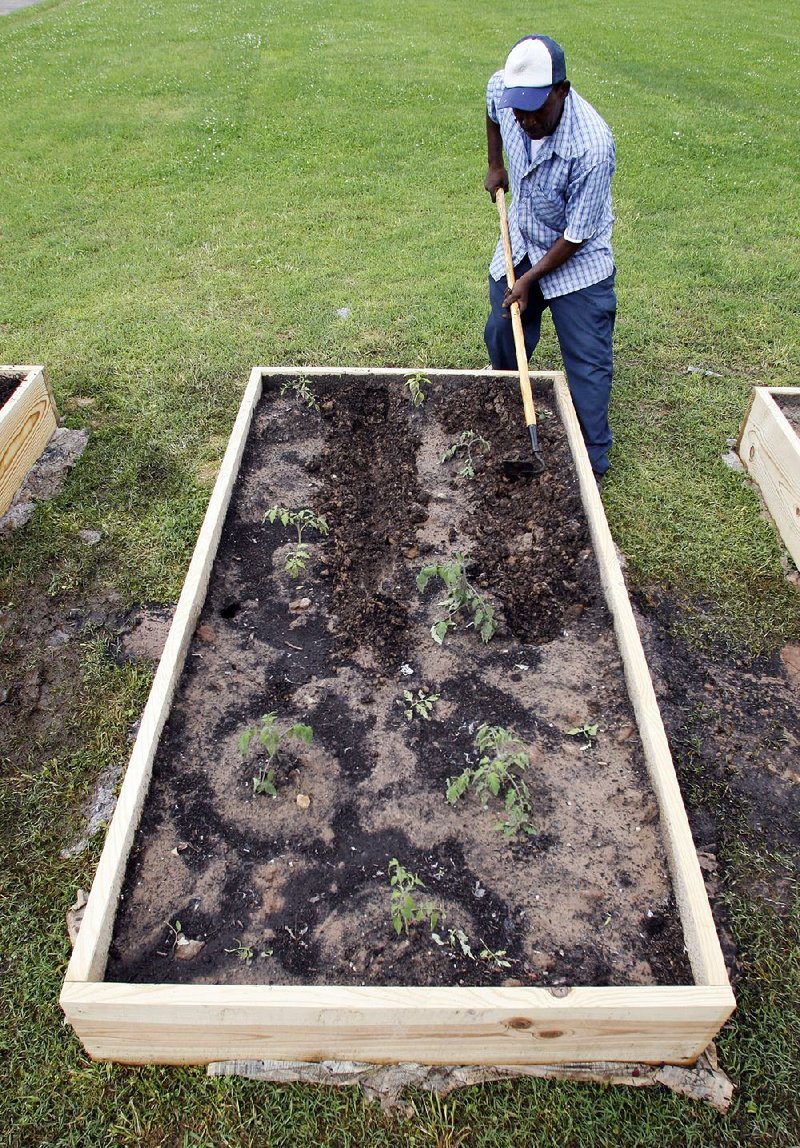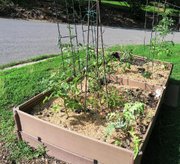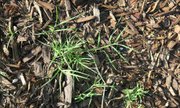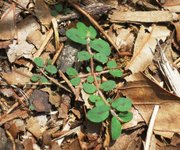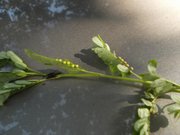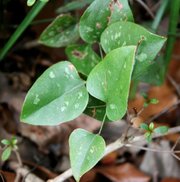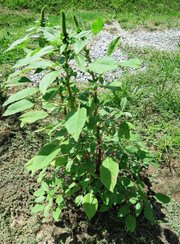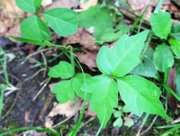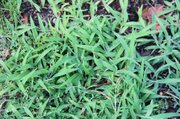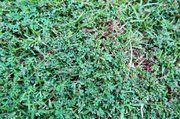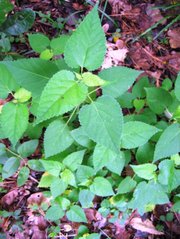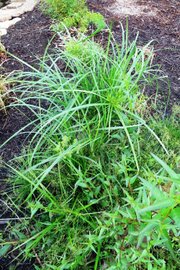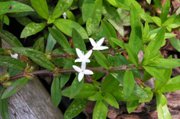Weeds are among gardening's biggest challenges.
No matter how bad the weather gets, weeds seem to grow undaunted. They are tough, able to survive and thrive in a wide range of conditions. Learning to identify the weeds you have is often the first step to controlling them. If you can catch them early, you may be able to limit their spread and recurrence.
For weed control in a vegetable and flower garden, I often recommend the Santa Claus method -- hoe, hoe, hoe. Herbicides can control weeds, but if you opt for chemical control, know there are differences in what can be sprayed around ornamentals, turf and edibles.
Summer weeds can be divided into annuals and perennials. While the annuals are here for just one season, they aggressively set seeds, setting the stage for an unhappy return next season. Perennials can set seeds, too, but they also come back from the root system. That makes them more difficult to kill.
Our top 10 list expanded to 11, so you get a bonus. Lucky you.
TOP 11 SUMMER WEEDS (LISTED ALPHABETICALLY)
• Bermuda grass -- While Bermuda grass is a desired lawn grass, when it escapes into flower beds and vegetable gardens, it is a tenacious weed. It thrives in hot, dry conditions in full sun. It does not compete well in the shade. Bermuda grass spreads by rhizomes and, if left unchecked, can outcompete flowers and vegetables. Give yourself a buffer zone of 6 to 12 inches between the end of your lawn and the beginning of your vegetable and flower gardens.
• Chambers Bitters -- Chambers Bitters is the rabbit of the weed world. This annual weed doesn't get growing until the soil temperature rises with the heat, but when it does, stand back. The compound leaves resemble a miniature mimosa tree. The plant begins to flower and set seeds at a young age. The seeds are produced on the undersurface of the leaves. The plant grows upright and can get as tall as 4 feet or more if left untouched. It has a strong taproot, which makes it quite drought tolerant. The key to controlling this weed is to catch it early.
• Crabgrass is a summer annual grassy weed that germinates when soil
temperatures are approximately 60 degrees for 3 to 5 days. It begins flowering and setting seeds some years by late May and continues until a frost. Crabgrass is a common weed in lawns and flower beds; it can quickly generate a seed stalk between mowings. In lawns, the most effective way to control crabgrass is to create a dense, healthy turf and/or use a pre-emergent herbicide. I typically don't recommend using a pre-emergent herbicide in flower beds or vegetables, since these products can inhibit vegetable and flower seeds as well. It is shallow-rooted, so it pulls out easily or can be uprooted with a hoe.
• Greenbrier is a vining perennial covered in thorns. It has a deep root system which makes it difficult to kill. The plant tolerates heat and cold, but goes dormant with a killing frost. If you can wear protective clothing and pull it out from the root system, it will help. But it's rare that you can pull all the roots, so the plant will likely return. Spot spraying at the base of the plant with a glyphosate product (Roundup) can help. It will grow in sun or shade and often intertwines with shrubs in the flower bed.
• Lespedeza is a very familiar summer weed that can easily choke out thin lawns. Lespedeza is a low-growing annual weed with tough, wiry stems that form a mat-like growth. It has dark green trifoliate (arranged in threes) leaves. Lespedeza has a semiwoody taproot and grows close to the ground, making it difficult to cut with a mower. It flowers in late summer with tiny pink to purple single flowers found in leaf axils.
• Mulberry weed is so named because it resembles tiny mulberry trees. However, mulberries have smooth stems, while the weed has prominent hairs on the stems and leaves. This annual weed forms a taproot and easily grows to 3 feet or more in height and produces flowers at the nodes, which quickly turn into seeds. If left unchecked, it can easily set enough seeds to take over your garden.
• Nutgrass is not a grass but a sedge; so, to be precise, call it nutsedge. Although it looks grasslike, nutsedge has a triangular stem, while grass stems are hollow and round. This tenacious perennial weed forms a small underground nutlet or bulb-like structure. We have yellow and purple nutsedge. These plants thrive in moist soils with full sun. Shade is a limiting factor. Eradication is difficult, so if you spot a new patch, dig it out from the root system. They are a pest in lawns, flower beds and vegetable gardens.
• Pigweed is the common name for several annual species of weeds in the amaranth family. They are more of a problem in a vegetable garden than in lawns. Pigweed grows quickly and forms tall bushy plants. They thrive in hot, dry weather and quickly respond to fertilizer, often out-competing vegetables for nutrients. A single large plant can mature 100,000-600,000 seeds, and can begin to set seeds within six weeks of emerging in your garden. If you allow them to bloom, you will see them next year.
• Poison Ivy is a terrible perennial weed that pops up in lawns and gardens across the state. This vine or woody plant can take on a wide range of leaf shapes, but are always in groups of three. The entire plant is poisonous since all parts contain an oil called urushiol, which causes the irritating rash on people who are allergic to it. Gardeners often overlook the plant in the winter when it is dormant, but it still contains the oils in the roots and stems. Burning the remains of poison ivy can be dangerous since the oils can escape in the smoke, and people who are highly allergic can suffer tremendously. Try to get it out from the roots. Be sure to clean your gloves or tools after working around it, as the oil can also be transferred from objects just as it can from the plant. It has great fall color and in recent years has set a copious amount of seeds, which the birds eat and drop all over your garden.
• Spurge is a large family of plants in the euphorbia family, which issue a white, milky sap when the leaves are cut. Prostrate spurge is a mat-forming annual weed that can spread up to 2 feet across from a central taproot. While it is a common weed, it is even more prevalent in exposed, compacted soil in the sun, often appearing in the crevices of sidewalks and driveways. Although the flowers are small, the plant blooms continuously from late May through frost, setting plenty of seeds to come back next year.
• Virginia buttonweed is a common perennial weed in lawns that often resists chemical control. The plant forms a thick matted growth that is particularly aggressive in moist areas. It is a spreading broadleaf perennial with opposite leaves that often have a mottled, yellow appearance caused by a virus that commonly infects the foliage, but doesn't slow its growth. It produces showy white star-shaped blooms above ground, and it also produces another set of flowers below ground. Virginia buttonweed has deep taproots and rhizomes that often start at the nodes. Rhizomes can be found as deep as several feet below the soil. If you spot this weed, the sooner you control it, the better.
There are a whole host of weeds which live and thrive in Arkansas gardens and lawns. Learning to recognize and get rid of them is step one. Sound management practices are also a step in the right direction -- maintaining a dense lawn to outcompete lawn weeds, mulching flower and vegetable gardens and healthy management of all gardens will help. No matter how good a gardener you are, no garden will ever be weed free all the time. But ignorance is not bliss, it will simply allow weeds to take over. So be diligent and watch for problems and handle them as quickly as you spot them.
Janet B. Carson is a horticulture specialist for the University of Arkansas Cooperative Extension Service. Write to her at 2301 S. University Ave., Little Rock, Ark. 72204 or email her at
jcarson@arkansasonline.com
HomeStyle on 07/16/2016
